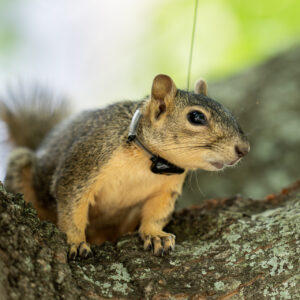Calvin Trostle, Extension Agronomy, Texas A&M—Lubbock, (806) 746-6101, c-trostle@tamu.edu
2 June 2001
Greater sunflower acreage in Texas in 2001 increases the chance we will see hail injury on sunflower. I first evaluated fields on May 15 in Lamb County that had been damaged the previous weekend, more has occurred since during the May 30 debacle. The following materials should be of use in determining the degree of damage, and whether the stand should be kept.
Don’t Make a Final Decision on Sunflower Stand Evaluation Too Quickly
Across West Texas with so many of our crops, many of our farmers rush to a decision on a damaged crop based on emotion or insufficient information. The health of remaining plants as well as the capacity of many crops—and sunflower is no exception—to compensate for reduced stands, particularly early in the season during vegetative (rather than reproductive) growth will greatly influence the decision. We often joke that after crop hail and wind damage a farmer would be better off going fishing. Then several days to a week later he or she can evaluate the crop when its true condition is easier to determine, as often the crop then doesn’t look so bad.
With this document are four pages of notes on hail injury to sunflower published by North Dakota State University (http://www.ext.nodak.edu/extpubs/plantsci/rowcrops/eb25w-2.htm; see references). These pages describe the different types of injury to sunflower, including leaf loss, stand reduction, and plant injury. Also, charts are included which either estimate the reduction in yield potential at numerous vegetative and reproductive growth stages due to 1) leaf loss or damaged plants, or 2) stand reduction. These charts are the same ones used by the National Crop Insurance Service and its members for insurance adjustment on sunflower stands. These tables were developed using oilseed sunflower, but are used for confectionary as well. In general, the NDSU information will not be repeated, but additional considerations will be discussed which may assist Texas growers to consider how to handle damaged sunflower crops.
Likewise, two pages are included which summarize the vegetative and reproductive stages of physiological development of sunflower, also from the NDSU sunflower guide. The same information is also available on the Internet, complete with color pictures, in “High Plains Sunflower Production Handbook” (Kansas, Colorado, Nebraska, Wyoming) available on the Internet at http://www.oznet.ksu.edu/library/crpsl2/samplers/MF2384.htm
If My Sunflower Stand Is Thin Can I Thicken It Up?
No. Unlike other crops, sunflower stands should rarely if ever be thickened by replanting along side a partial stand. Why? Because we only want to treat one potential sunflower (head) moth infestation not two. As noted in other Texas sunflower literature, the sunflower moth is “the boll weevil of sunflowers,” but it is only a threat during the 7 to 10 days beginning with initial bloom. Generally, sunflower moth pressure is lighter with later plantings (June), but those same plantings are less likely to be damaged by hail and wind. Replanting along side an existing stand will mean flowering occurs at two different times, hence sunflower moth would have to be treated twice (that is, two series of sprays) for effective control.
If the oilseed or confectionary hybrid is full season in maturity, one might think you could plant a shorter maturity hybrid, particularly for oilseed where shorter maturity sunflowers are available, along side the earlier planted crop so that flowering might still occur about the same time. This is still not advised even if sunflowers are damaged within 7 days of emergence because you are still likely to face two bloom periods. The potential is high that you will face economic losses to sunflower moth if you don’t spray the later stand.
Suggestions on Percent Stand Reduction and Minimums for Remaining Plant Population
Current suggestions for targeted seed drop in Texas sunflower are: confectionary—irrigated, 16,000-18,000 seeds/acre, and dryland, 12,000-14,000 seeds/acre; NuSun oilseed—irrigated, 20,000-23,000 seeds/acre, and dryland, 14,000-18,000 seeds/acre. These numbers assume approximately 85% stand establishment. For confectionary the emphasis is on controlling plant population so as to increase the percentage of larger seed (worth about twice as much as the smaller seed). For both market types, seeding rates are slightly lower than one might find recommended in Kansas and Colorado where water evapotranspiration is lower and soil type generally has greater water holding capacity. Optimum seeding rate is one current focus of irrigated and dryland TAEX sunflower work for confectionary and NuSun near both Plainview and Dumas, Texas. See the TAEX document “Common Concerns in West Texas Sunflower Production and Ways to Solve Them” for further information on seeding rates and other insect and production information for sunflower.
Growers should be more concerned with stand reduction (which includes the loss of the terminal, or growing point, even if the plant survives) than leaf lost in the vegetative stage. Sunflower, just like cotton, is subject to damage on the terminal. Later in the season growers should be more willing to accept a low stand, but then it is also more likely you will have competing plants (acting like weeds) that have lost the head.
Using Table 12, page 78, of the attached NDSU table discussing stand reduction, one learns that a 50% stand loss in vegetative stages V-E (emergence) to V-11 (leaf 11) results in an approximate yield loss of about 12%. That hints at how well sunflowers can compensate for a thinned stand, provided the stand is somewhat uniform. One possible caveat with the NDSU table, developed for oilseed sunflower (but used for both oilseed and confectionary), is that a 50% stand reduction of 20,000 to 22,000 plants/acre might suffer less yield reduction than a 50% stand reduction when populations are only 12,000 to 14,000 plants/acre. This latter plant population may be found in irrigated confectionary and in dryland fields of both types in Texas. A 50% stand reduction of the lower number may leave poor coverage of the field such that considerable open space is left. With only 6,000 to 7,000 remaining plants per acre my opinion is that one might anticipate a larger yield reduction than the 12% as suggested in Table 12.
Industry partners report that good irrigated confectionary yields may still be achieved with a plant stand as low as 8,000 plants/acre. If the yield potential of the primary crop was high, it may still be possible to approach and even equal 2,000 lbs./acre under optimum conditions. For dryland, 7,000 plants/acre, especially when replanting is a questionable option, may be acceptable.
For oilseed, industry partners suggest a plants per acre “bottom limit,” when replanting is an option, might be in the range of 12,000-14,000 plants/acre for irrigated, and 10,000-12,000 plants/acre dryland. Again, because of hotter, drier conditions in West Texas plant population ranges that are lower by 2,000 plants/acre still might be acceptable, particularly for plants further along in the growing season when replanting is questionable and yield potential of later-planted stands may be lower.
One caveat of the above reduced plant population numbers is that damaged plants which loose the terminal or head but survive will restrict normal plants. This is worse than if the plants had died as they still compete for sunlight, water, nutrients, and space. For example a crop with 8,000 confectionary plants/acre with few other remaining plants is a better candidate for success than the same number of viable plants in a stand which also contains 4,000 plants/acre which will never produce a head.
Replant Costs
If farmers have a stand of sunflowers that is marginal in terms of plant population they must consider replant costs as part of whether to terminate the existing stand. Check with your seed dealer or contractor for reduced prices on replant crop. Replant seed cost on irrigated may average $10-12/A; somewhat less with dryland. Planter costs will run $5-6/A, slightly more for custom rates if air/vacuum planters were leased or hired for ensuring the all-important seed drop, particularly for confectionary sunflower. Growers replanting may factor in the potential for reduced number of sprays for sunflower moth if replanting occurs one month or more after the original planting.
So… Should I Replant?
Once you have evaluated the plant health and remaining stand in a damaged sunflower crop, it is important to consider the time of season when a sunflower crop may be damaged. In general, West Texas sunflower yield potential is higher with earlier plantings (mid April to early May) compared to June plantings. Also, consider replant costs and whether replanting can be done in a timely manner. Furthermore, some growers may be influenced by contract stipulations about planting date and delivery date. In this case, for example, Sigco Sun confectionary contracts stipulate planting date and delivery date for 2001. Sunflowers delivered after a certain date (September 1?) are priced at $2/cwt lower, which favors keeping an existing stand, even if marginal, over replanting for crop loss from mid-May forward.
Again, growers should be cautious about terminating damaged sunflower stands too quickly, but should give the crop several days before a final evaluation is made if one believes the stand might be marginal. Growers should ensure that a few acres on a 120-acre pivot don’t dictate what should be done for the whole circle.
Management of Damaged Sunflower Crop
For crop that is damaged early in the vegetative stage, mid-season N applications (if not all applied pre-plant) may be reduced somewhat to reflect lower yield potential. Also, irrigation levels might be adjusted downward somewhat although more water per plant should in fact compensate with extra yield per plant. Regardless of plant stands sunflowers favor large individual irrigations rather than frequent irrigation. Growers should not reduce thresholds for spraying sunflower (head) moth as egg laying and larvae infestation has a greater potential to reduce yields of individual heads, particularly for confectionary where a higher proportion of larger, more valuable seed is expected. Other tips for sunflower production in general may be found in the TAEX “Common Concerns” document noted above.
Last Recommended Sunflower Planting Date in West Texas
Suggested last planting dates for West Texas are compiled in the TAEX bulletin “Last Recommended Planting Date for Sunflower in West Texas.” Dates are somewhat conservative in that an early fall could substantially clip yields (or reduce NuSun oil content) if planted much later than the suggested dates. Hence a “safe” recommended last planting date with a good expectation of successful production is provided based on 30-year climate data, county elevation, etc. Last recommended planting dates are listed by county ranging from July 5 in the western Panhandle and northwest South Plains to July 15 across the lower South Plains and off the southeastern Caprock around Sweetwater.
Sunflower References
These and other sunflower information resources may be found on or linked to from the website of the Texas A&M—Lubbock Research & Extension Center, http://lubbock.tamu.edu
What About Crop Evaluation for Hail Damage and Stand Reduction to Other Crops?
If West Texas growers have received hail damage on sunflower then they probably are looking at damage on other crops as well (unless sunflowers are planted very early). The following documents provide additional information.
Cotton—In summary, often West Texas cotton growers are better off leaving existing cotton stands vs. replanting even if as few as 1.5 healthy plants per row foot remain.
* Effects of Stand Loss ans Skips on Cotton Yields, James Supak and Randy Boman; Texas Agricultural Extension Service, Lubbock (revised 1999); see your county ag. agent or access at http://lubbock.tamu.edu
* Making Replant Decisions (Cotton), James Supak and Randy Boman; Texas Agricultural Extension Service, Lubbock (revised 1999); see your county ag. agent or access at http://lubbock.tamu.edu
Corn and Sorghum—
* Assessing Hail and Freeze Damage in Corn and Sorghum, John Bremer, Cloyce Coffman, and Steve Livingston; Texas Ag. Extension Service, L-5014 (1998).
Acknowledgements
Appreciation is expressed to Ken Berndt, Northern Sun, Goodland, KS (oilseed); Mike Williams, Red River Commodities, Lubbock, TX (confectionary); and Michael Bretz, Sigco Sun, Goodland, KS (confectionary) for helpful suggestions regarding evaluation and response to damaged sunflower crops.
Appendix
Mid- and Late-Season Markets for West Texas Sunflower, 2001
NuSun Mid-Oleic Oilseed—Markets include Southern Cotton Oil and Red River Commodities both in Lubbock and Northern Sun in Goodland, KS. Conventional oilseed sunflower will not be accepted in Lubbock.
Southern Cotton Oil (Lubbock, TX; 800.658.2650) is accepting NuSun from the Texas South Plains region for crushing in Lubbock. As of June 1 contracts were available at ~$6.75/cwt + LDP plus oil premium at 2 for 1 for oil content above 40% delivered to Lubbock (about $0.38/cwt for 43% oil content). Growers collect the LDP which is currently about $3.00/cwt, and typically rises as harvest approaches and peaks during harvest (most likely late August to early October). Growers may follow the LDP for sunflower, updated weekly every Friday morning, at http://www.fsa.usda.gov/dafp/psd/. Industry representatives have suggested that contracting and locking in the price is not necessarily the best way to go on NuSun, rather growers may deliver at any time. Most Texas sunflower growers, however, will not have storage thus must sell at harvest time. It is not necessary to contract, and one caveat for contracting for growers is the required delivery of pounds, not acres of production. Thus if contracting growers need to be cautious about how many pounds they commit to deliver under contract. All excess will be accepted at the then current market price.
Red River Commodities (Lubbock, TX; 800.763.9747 also is in the market for substantial NuSun acreage with delivery to either Lubbock, Muleshoe (Kelly Green), or Plainview (Southwestern Grain) for processing in Lubbock. Red River is offering contract based on acreage at a guarantee of $9.50/cwt regardless of oil content, and Red River assumes the risk of LDP fluctuation. Red River is also able to make landlord splits (i.e., split ticket). Also, growers will not be assessed an elevator fee or shipping charges for hauling NuSun to Lubbock if they deliver in Muleshoe or Plainview.
South Plains growers may also deliver at Texas Sesame in Muleshoe (John Chisum, 806.272.4231) for transfer to Southern Cotton Oil in Lubbock, but prices favor direct farmer delivery to Lubbock. Southern Cotton Oil cannot split tickets as a local elevator can, so growers will need to keep good records to break proceeds out to landlords. Also, Southern Cotton Oil is equipped to handle either tapered bottom trailers or trucks with their own hoist and dump gate.
For the Texas Panhandle, Southern Cotton Oil’s sister organization Northern Sun (Goodland, KS; 800.542-7333) anticipates receiving most NuSun production in the Amarillo area and north. New crop prices as of June 1 delivered to Goodland are ~$7.15/cwt + LDP plus applicable oil premium above 40% less trucking charges. Several delivery points are available in the Panhandle for NuSun, but call Northern Sun to consider if you might be better off delivering direct to Goodland and thus eliminate the elevator pass-through charge. Prices may change daily so call for current price.
Confectionary—Red River Commodities (Lubbock, TX; 800.763.9747; numerous delivery points in Panhandle and South Plains) contracts for confectionary have been full since about March. Sigco Sun (Goodland, KS; 800.742.9259) has delivery in Lazbuddie, TX, for the South Plains and Goodland, KS, for north of Amarillo. Sigco Sun contracts stipulated earlier planting (by April 20-30), and prices are about $2/cwt lower for primary or re-plant crop if not delivered by September 1, 2001.





